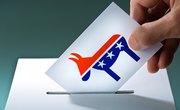Designed to foster equality, affirmative action was introduced during the Kennedy presidency in the 1960s. Roughly a decade later, a white man named Allan Bakke would file a lawsuit against the University of California on the grounds that its racial quotas were partial to minority applicants. Today, in a country more diverse than ever, Americans continue to weigh the pros and cons of using affirmative action in the college admissions process.
Diversity And The Law
In 1954, Brown v. the Board of Education ruled that segregation was illegal. Integrating American institutes of higher education, however, would not happen instantly. In 1961, for example, the University of Georgia still did not admit black students. Not until the federal government issued a court order mandating it to do so did it begin to diversify. Still, critics of these affirmative action practices believe they violate white students' 14th Amendment rights to equal protection under the law.
Balancing Gender
A law passed in 1972 that prohibited gender discrimination, Title IX, was instrumental in populating college campuses with female students. Statistics show that greater numbers of young women are now graduating from college than young men. While many agree that leveling the academic playing field for women once was necessary, there are public policy experts who believe the legislative-driven success of female students is giving them an unnecessary advantage over those who are male.
Bridging The Class Divide
Income-based affirmative action focuses on recruiting students who are economically disadvantaged. It identifies poverty as the main deterrent to social mobility and ensures that college applicants don’t benefit from special recruitment efforts merely because they’re members of minority groups. Nonetheless, many insist that affirmative action in college admissions should remain centered on racial and ethnic groups who are most victimized by negative stereotypes that limit their social range and potential.
Sexual Orientation
As an article in the October 10, 2011 issue of The Dartmouth shows, colleges are becoming more aware that their campuses should be friendly to lesbian, bisexual, transgender and gay students. There are others, however, who argue that sexual preference is only a factor in social-power dynamics when someone is visibly out of the closet. They believe that if affirmative action quotas extend to include sexual minorities, some college applicants will pretend they're gay.
Related Articles
References
- Designed to foster equality, affirmative action was introduced during the Kennedy presidency in the sixties
- Roughly a decade later, a white male named Allan Bakke would file a lawsuit against the University of California on the grounds that their racial quotas were partial to minority applicants.
- In 1954, Brown v. the Board of Education ruled that segregation was illegal. Integrating American institutes of higher education, however, would not happen instantly.
- Nonetheless, many insist that affirmative action in college admissions should remain centered on racial and ethnic groups who are most victimized by negative stereotypes that limit their social range and potential.
- As a growing number of college candidates mention that they’re lesbian, bisexual, gay and transgender in their application essays, colleges are acknowledging that they need to create campuses that are friendly to this minority group.
Writer Bio
Jen Jefferson has been a writer and researcher since 2001. Her work has appeared in "Business Insights" and other publications. Jefferson has a Bachelor of Arts in English from The New School and a certificate in French from the International Language School in Montreal.











